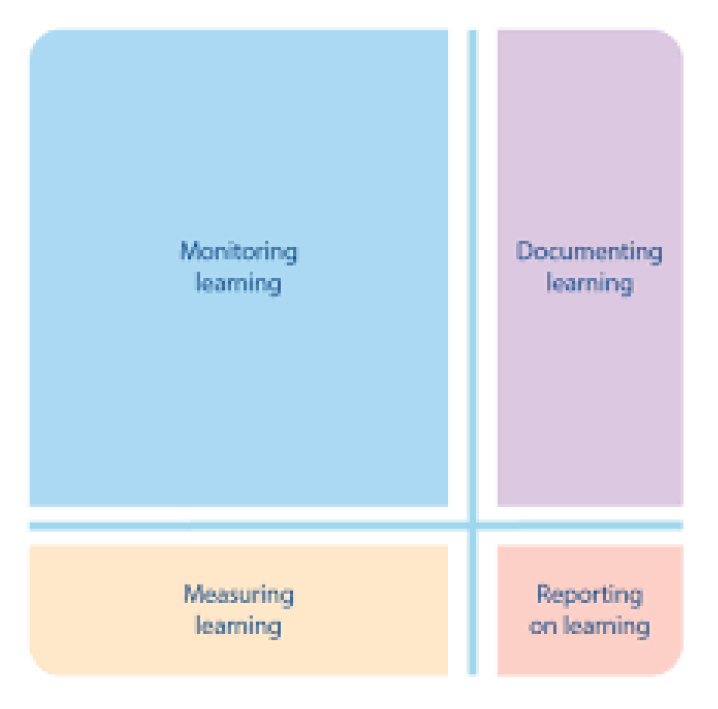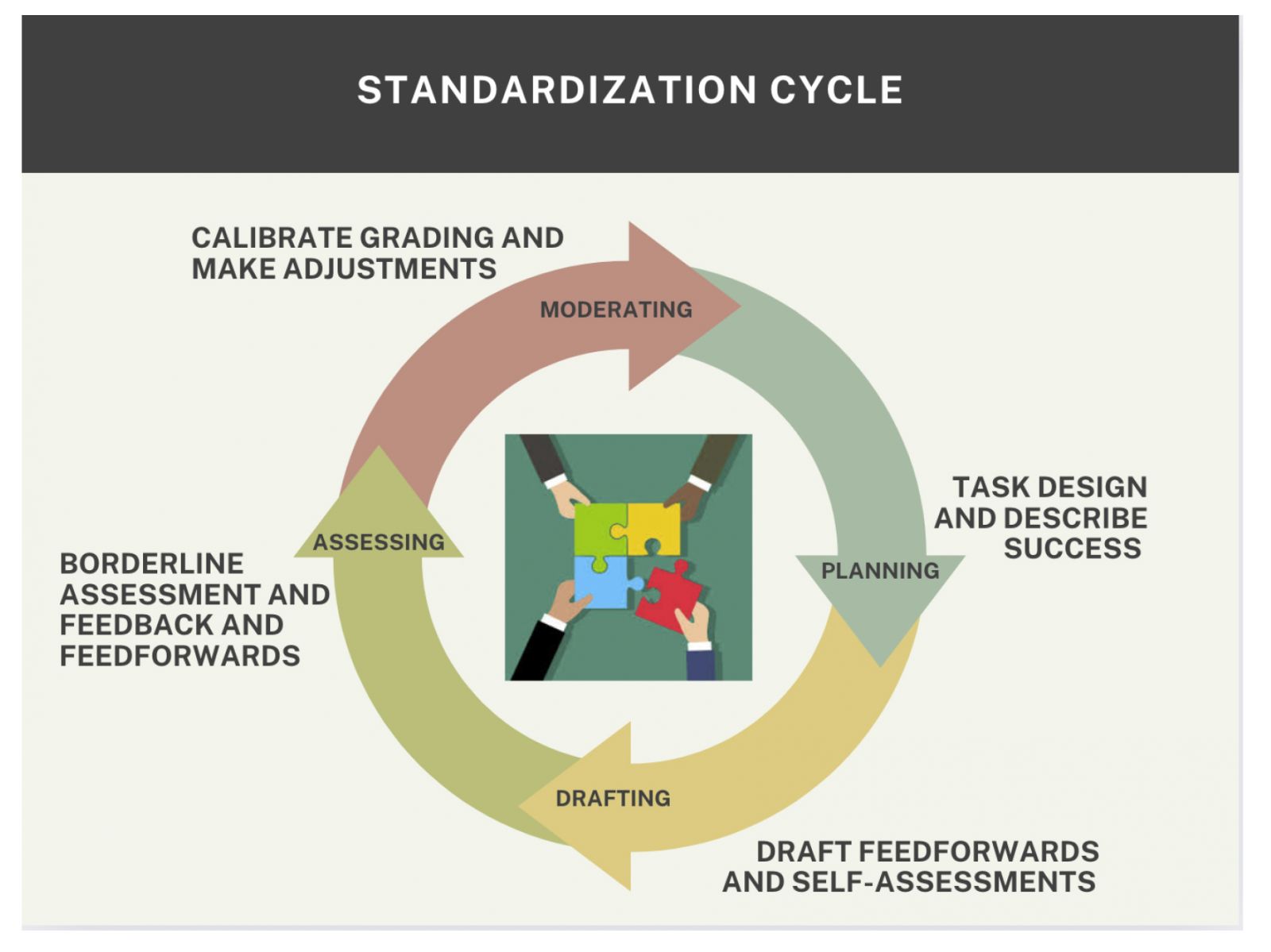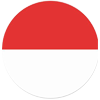A. Philosophy
Chung Chung Christian School recognizes the crucial role of assessment in supporting student learning, personal growth, and goals. Our assessment policy is grounded in the belief that assessment is an integral and ongoing process that aligns with the IB philosophy and aims to develop assessment-capable learners who are independent, self-aware, and actively engaged in their own learning journey. This also aligns our school’s vision to nurture the students holistically, meaning that we strive not only for academic abilities but also social and emotional competencies. Therefore, we are committed to ensuring that every assessment we undertake is meaningful, fair, and in the best interest of the students involved. We strive to evaluate students fairly and consistently across all subject areas, considering not only the products of learning but also the process of learning itself. This holistic approach allows us to gain a comprehensive understanding of each student's progress, strengths, and areas for development. By embracing the principles of assessment for learning, we empower our students to become confident, lifelong learners who are well-prepared to face the challenges of an ever-changing world.
B. Purposes and Principles
FOR STUDENTS
The primary purpose of assessment at Chung Chung Christian School is to provide meaningful feedback for learning. Assessment also serves as a valuable tool for students to recognize their achievements and identify areas for improvement, empowering them to take ownership of their learning and set personal goals and monitor their progress throughout their learning. By offering regular and constructive feedback, we support our students in overcoming challenges, enhancing their learning experiences, and deepening their understanding of concepts and skills.
FOR TEACHERS
Assessment is an integral part of the curriculum, as it informs future planning and teaching. By analyzing assessment data, teachers can identify areas where students excel and where they may need additional support. This information allows teachers to adapt their instructional strategies, differentiate learning experiences, and provide targeted interventions to ensure that every student has the opportunity to succeed. Assessment also enables teachers to reflect on the effectiveness of their teaching practices and make necessary adjustments to improve student learning outcomes.
FOR PARENTS
Assessment gives parents insights into their child’s progress, highlighting strengths and areas for improvement. It helps them support their learning at home and collaborate with teachers to ensure they reach their full potential. It also allows parents to track their child's growth and engage in meaningful discussions about their education and future goals.
At Chung Chung Christian School, we embrace the four principles of assessment:
- Transfer: We design assessments that challenge students to apply their knowledge and skills to new and authentic contexts, fostering the development of transferable understanding.
- Cultures of Growth: We cultivate a growth mindset among our school community, emphasizing the importance of continuous improvement and lifelong learning. We celebrate progress, effort, and perseverance.
- Feedback: It is a two-way process. We provide timely, specific, and actionable feedback to students, enabling them to reflect on their learning, set goals, and make necessary adjustments to their learning strategies. Whilst, we also encourage students to provide feedback to their teachers, fostering a collaborative and reflective learning community.
- Validity: We ensure that our assessments are valid, aligned with the intended learning outcomes to provide a fair and accurate representation of each student's achievements and potential. By designing assessments that accurately measure student learning and progress and taking into account the diverse needs and abilities of our students, we provide meaningful data that informs our teaching practices and supports student growth.
(Adopted from the IB guide on assessment)
C. Practices in the PYP
What and How to Assess?
Chung Chung Christian School recognizes the crucial role of assessment in supporting student learning, personal growth, and goals. Our assessment policy is grounded in the belief that assessment is an integral and ongoing process that aligns with the IB philosophy and aims to develop assessment-capable learners who are independent, self-aware, and actively engaged in their own learning journey. This also aligns our school’s vision to nurture the students holistically, meaning that we strive not only for academic abilities but also social and emotional competencies. Therefore, we are committed to ensuring that every assessment we undertake is meaningful, fair, and in the best interest of the students involved. We strive to evaluate students fairly and consistently across all subject areas, considering not only the products of learning but also the process of learning itself. This holistic approach allows us to gain a comprehensive understanding of each student's progress, strengths, and areas for development. By embracing the principles of assessment for learning, we empower our students to become confident, lifelong learners who are well-prepared to face the challenges of an ever-changing world.

Figure 1. Diagram of the four dimensions in the PYP assessment
| Assessment FOR Learning | Assessment AS Learning | Assessment OF Learning | |
| Monitoring |
|
|
|
| Documenting |
|
|
|
| Measuring |
|
|
|
| Reporting |
|
|
|
Different Types of Assessment in the School
- Rubric: It contains criteria and the descriptors that clearly define performance expectations for different levels of quality.
- Checklist: It contains a list of specific criteria or tasks that students or teachers can use to track progress of accomplishments or mastery.
- Self-Assessment: It contains aspects of learning that are used by the students to evaluate their own work or learning progress.
- Anecdotal Record: It contains brief, objective notes made by teachers to document specific observations of student behavior, skills, or progress over time.
How the School Reports the Student Progress
- Portfolio: It contains a collection of student work that demonstrates growth, skills, and achievements over time where students and teachers may decide to choose together the works.
- 3-Way and Student Led Conference: Interactive meetings involving the student, teacher, and parents (3-way), or primarily led by the student (student-led). These conferences allow students to showcase their learning, reflect on their progress, and set future goals with support from adults.
- Semester Report: A comprehensive document issued at the end of each semester, summarizing a student's academic performance, progress, and achievements across all subjects. It typically includes grades, comments from teachers.
- Monthly Learning Progress Report: A frequent update provided every month, offering a snapshot of a student's ongoing learning and development. This report helps maintain regular communication between school and home.
Teacher Moderation
Teachers design the assessments collaboratively to ensure consistency and fairness in assessment practices across different classes or grade levels. Below are the assessment criteria represent different levels of student performance:
- Beginning: This indicates that a student is just starting to acquire the skills or knowledge related to a specific learning outcome or objective. They are at the initial stages of development and may require additional support and guidance to progress further.
- Developing: This suggests that a student is making progress and showing improvement in the targeted areas. They are in the process of acquiring the skills and knowledge expected at their grade level but may not have fully mastered them yet.
- Achieving: When a student is described as achieving, it means they have successfully reached the expected level of competence or proficiency in the given subject or skill. They have met the learning outcomes and are performing at or near the expected grade level.
- Exceeding: Exceeding indicates that a student has surpassed the expected level of achievement. They have not only met the learning objectives but have demonstrated a higher level of mastery, often going above and beyond what is typically expected for their grade level.
D. Practices in the Middle School
Types of Assessments
- Formative Assessment: It is used to monitor student learning and provide ongoing feedback, conducted throughout the learning process. It is sometimes informal and low-stakes. Some examples are classroom discussions, quizzes, peer and self-assessments, and project drafts. Besides supporting the students, formative assessment is used to inform teaching strategies and make necessary adjustments.
- Summative Assessment: It is used to evaluate student learning at the end of an instructional unit, conducted at the conclusion of a defined instructional period. It is formal and often higher-stakes. Some examples are end-of-unit projects, essays, presentations, and tests. To determine the level of achievement, teachers use subject-specific assessment criteria (A, B, C, D).
Marking and Grading Schemes
| Final Grades | Descriptors |
|---|---|
| 7 |
Produces high-quality, frequently innovative work. Communicates comprehensive, nuanced understanding of concepts and contexts. Consistently demonstrates sophisticated critical and creative thinking. Frequently transfers knowledge and skills with independence and expertise in a variety of complex classroom and real-world situations. |
| 6 |
Produces high-quality, occasionally innovative work. Communicates extensive understanding of concepts and contexts. Demonstrates critical and creative thinking, frequently with sophistication. Uses knowledge and skills in familiar and unfamiliar classroom and real world situations, often with independence. |
| 5 |
Produces generally high-quality work. Communicates secureunderstanding of concepts and contexts. Demonstrates critical and creative thinking, sometimes with sophistication. Uses knowledge and skills in familiar classroom and real-world situations and, with support, some unfamiliar real-world situations. |
| 4 |
Produces good-quality work. Communicates basic understanding of most concepts and contexts with few misunderstandings and minor gaps. Often demonstrates basic critical and creative thinking. Uses knowledge and skills with some flexibility in familiar classroom situations, but requires support in unfamiliar situations. |
| 3 |
Produces work of an acceptable quality. Communicates basic understanding of many concepts and contexts, with occasionally significant misunderstandings or gaps. Begins to demonstrate some basic critical and creative thinking. Is often inflexible in the use of knowledge and skills, requiring support even in familiar classroom situations. |
| 2 |
Produces work of limited quality. Expresses misunderstandings or significant gaps in understanding for many concepts and contexts. Infrequently demonstrates critical or creative thinking. Generally inflexible in the use of knowledge and skills, infrequently applying knowledge and skills. |
| 1 |
Produces work of very limited quality. Conveys many significant misunderstandings or lacks understanding of most concepts and contexts. Very rarely demonstrates critical or creative thinking. Very inflexible, rarely using knowledge or skills. |
| N/A |
Not Yet Assessed |
- Criterion-Based Assessment: Each subject has four assessment criteria (A, B, C, D), each with its own set of strands.
- Achievement Levels: For each criterion, there are detailed level descriptors for achievement levels 1-7. Teachers use these descriptors to determine a student's achievement level for each criterion.
- Best-Fit Approach:
- Teachers use professional judgment to determine which level descriptor best fits a student's work.
- Subject Grades:
- To determine the final grade for a subject, teachers add up the student's final achievement levels in all four criteria.
- This total is then converted to a grade on a scale of 1-7 using prescribed grade boundaries.
- Reporting:
- Reports typically show both the criterion levels and the final grade for each subject.
- Interdisciplinary Learning:
- Interdisciplinary units are assessed using four specific interdisciplinary criteria.
- Standardization:
- The school team conducts internal standardization to ensure consistency in applying the assessment criteria across different classes and teachers.
This system aims to provide a comprehensive and fair assessment of student learning, aligned with the school philosophy and objectives.
Standardization Cycle

Formative and Summative Assessments
Formative Assessments:
- Purpose: Designed to monitor student learning to provide ongoing feedback that can be used by instructors to improve their teaching and by students to improve their learning.
- Characteristics: Often informal, continuous, and diagnostic in nature. They occur throughout a unit of study and may include quizzes, discussions, peer assessments, and drafts of work.
- Focus: Emphasizes the process of learning and development of skills. Helps identify strengths and weaknesses early so adjustments can be made.
Summative Assessments:
- Purpose: Evaluates student learning at the end of an instructional unit by comparing it against some standard or benchmark.
- Characteristics: Typically formal, structured, and evaluative. Examples include final exams, projects, essays, or performances.
- Focus: Emphasizes the outcome of learning, determining how much students have learned from the unit of study. Results are often used for accountability purposes.
References:
- IBO. 2024. PYP Principles into Practice. Assessment. International Baccalaureate Organization.
- OpenAI. ChatGPT, Version GPT-4, 2024. //chat.openai.com/].



